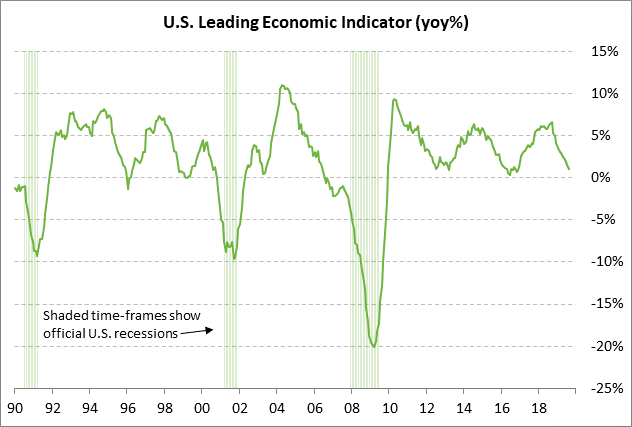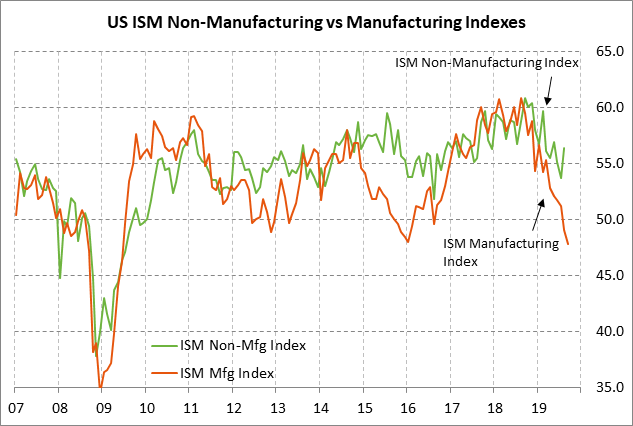- Brexit turns on Saturday’s momentous UK Parliamentary vote
- U.S. and Chinese officials try to reassure markets that talks are on track for a phase-one trade agreement
- LEI year-on-year expected to be near a 10-year low
Brexit turns on Saturday’s momentous UK Parliamentary vote — The UK Parliament on Saturday will hold a momentous vote about whether to accept the UK/EU Brexit withdrawal agreement reached early Thursday. The vote will be a squeaker since the Conservatives are in the minority and since nearly all opposition Labour and Liberal Democratic members will vote against the deal.
Passage of the deal was made much harder by the quick rejection of the deal by the Northern Irish Democratic Unionist Party (DUP). The DUP has only 10 seats in Parliament but the DUP is propping up the Conservative Party as a coalition partner.
Also, there are a handful of Conservative Party members who have said in the past that they would not vote for any Brexit deal that is opposed by the DUP. Those MPs put a high priority on maintaining the constitutional integrity of the UK and they do not want to see Northern Ireland cleaved off from the British mainland by a customs border in the Irish Sea that might make voters in Northern Ireland gravitate over time to favor unification with Ireland.
Given the opposition of the DUP, Prime Minister Johnson will only be able to get a majority vote in Parliament on Saturday if he gets nearly all Conservative Party members on board as well as a handful of opposition Labour and Liberal Democratic members.
If the UK Parliament approves the Brexit deal on Saturday, then the UK will exit the EU on October 31. The UK would then enjoy a smooth transition period through the end of 2020 during which the UK will continue to operate under EU customs rules while the UK and the EU negotiate a final trade treaty.
If the UK Parliament approves the Brexit deal on Saturday, then most of the market’s worries about Brexit will be over until at least the end of the transition period at the end of 2020. The threat of a no-deal Brexit on October 31 will be gone and markets will downgrade Brexit worries to the back burner over the next year.
By contrast, if the UK Parliament on Saturday votes against the Brexit agreement, then the Brexit quagmire will continue. The most likely outcome, in that case, would be that Prime Minister Johnson would meet the requirements of the Benn Act and request an extension of the October 31 deadline. Mr. Johnson will then get his wish for new elections and will go to voters with a pitch that he did everything he could to get the UK out of the EU by October 31 but that he was stymied by Parliament.
The next step on Brexit would then be determined by the party that wins the next election. If the Conservatives win, then the Conservatives are likely to try to push something close to the current Brexit deal through the new Parliament in which they would hold a majority of seats. However, if Labour wins, then the country might be headed to a second referendum.
If Parliament votes down the Brexit deal on Saturday, the other possible outcome is that PM Johnson engineers a no-deal Brexit on Oct 31. Mr. Johnson, after all, famously made the recent statement that he would rather be “dead in a ditch” than request a Brexit extension. Parliament would strongly oppose that move and he would be challenged in court. Nevertheless, there is at least a small chance that Mr. Johnson figures out a way to work around Parliament and follows through with his threat of a no-deal Brexit.
In that case, sterling and the UK stock market would take a heavy hit from the border chaos that would ensue from a no-deal Brexit in two weeks. Yet, the betting markets are assigning only a low 14% probability (6/1) to a no-deal Brexit by the end of this year, according to oddschecker.com.
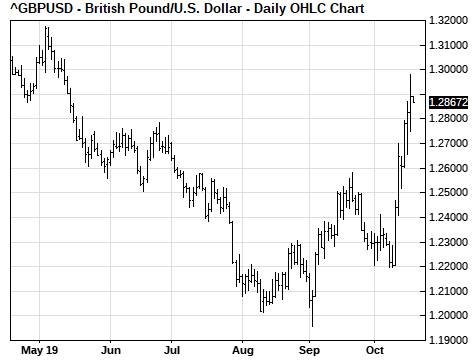
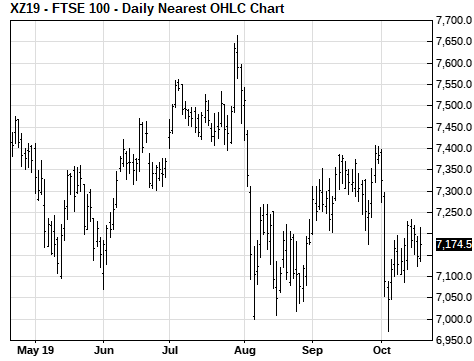
U.S. and Chinese officials try to reassure markets that talks are on track for a phase-one trade agreement — U.S. and Chinese officials on Thursday made various statements trying to reassure the markets that talks are on track for a phase-one trade deal. Their goal is to write up that deal in legal language and have Presidents Trump and Xi sign the deal at the upcoming APEC Summit in Chile on Nov 16-17.
President Trump, after high-level talks last Friday, scrapped the hike in the tariff to 30% from 25% on $250 billion that otherwise would have taken effect this past Tuesday. However, he left in play his threat of the 15% tariff on the remaining $160 billion of Chinese goods effective on December 15.
Meanwhile, Chinese officials in leaks to reporters have indicated resistance to the phase-one deal and have suggested that big ag purchases depend on a roll-back of existing tariffs, not just the cancellation of Tuesday’s tariff hike to 30% from 25%. At a minimum, China is likely to insist that President Trump scrap his Dec 15 tariff threat.
Treasury Secretary Mnuchin on Wednesday said that the plan is for high-level talks to continue on the phone over the next couple of weeks. He said that a face-to-face meeting is possible but not scheduled at this point. In the meantime, US/Chinese trade tensions will continue to cause substantial uncertainty for the markets.
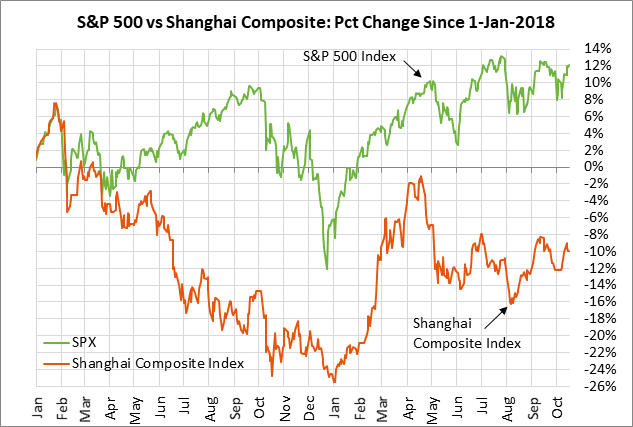
LEI year-on-year expected to be near a 10-year low — Today’s Sep leading indicators report is expected at unchanged m/m and +0.5% y/y following Aug’s report of unchanged m/m and +1.1% y/y. Today’s expected year-on-year report of +0.5% y/y would be only 0.2 points above the 10-year low of +0.3% posted in 2016 and would provide additional bearish data for the U.S. economy.
